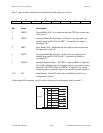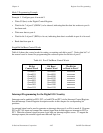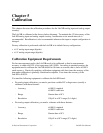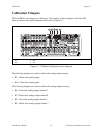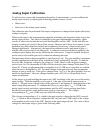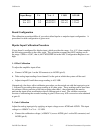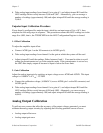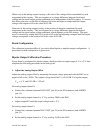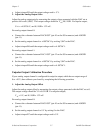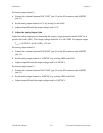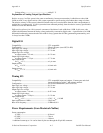Calibration Chapter 5
Lab-NB User Manual 5-6 © National Instruments Corporation
Offset error in the analog output circuitry is the total of the voltage offsets contributed by each
component in the circuitry. This error appears as a voltage difference between the desired
voltage and the actual output voltage generated and is independent of the D/A setting. To correct
this offset gain error, set the D/A to negative full-scale and adjust a trimpot until the output
voltage is the negative full-scale value ±0.5 LSB.
Gain error in the analog output circuitry is the product of the gains contributed by each
component in the circuitry. This error appears as a voltage difference between the desired
voltage and the actual output voltage generated, which depends on the D/A setting. This gain
error is corrected by setting the D/A to positive full-scale and adjusting a trimpot until the output
voltage corresponds to the positive full-scale value ±0.5 LSB.
Board Configuration
The calibration procedure differs if you select either bipolar or unipolar output configuration. A
procedure for each configuration is given next.
Bipolar Output Calibration Procedure
If your board is configured for bipolar output, which provides an output range of -5 to +5 V, then
complete the following procedures in the order given.
1. Adjust the Analog Output Offset
Adjust the analog output offset by measuring the output voltage generated with the DAC set at
negative full-scale (-2048). This output voltage should be V
-fs
±0.5 LSB. For bipolar output,
V
-fs
= -5 V, and 0.5 LSB = 1.22 mV.
For analog output channel 0:
a. Connect the voltmeter between DAC0 OUT (pin 10 on the I/O connector) and AOGND
(pin 11).
b. Set the analog output channel to -5 V by writing -2048 to the DAC.
c. Adjust trimpot R7 until the output voltage read is -5 V.
For analog output channel 1:
a. Connect the voltmeter between DAC1 OUT (pin 12 on the I/O connector) and AOGND
(pin 11).
b. Set the analog output channel to -5 V by writing -2,048 to the DAC.




